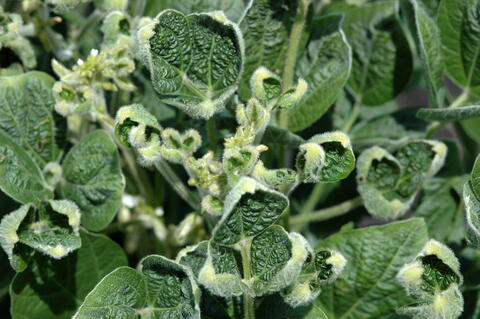2025-07-07 アルゴンヌ国立研究所 (ANL)

Atomic structure of vermiculite membrane showing 2D layers supported by aluminum oxide pillars. Yellow balls are doped sodium ion. (Image by Argonne National Laboratory.)
<関連情報>
- https://www.anl.gov/article/argonne-researchers-develop-new-membrane-technology-to-extract-lithium-from-water
- https://advanced.onlinelibrary.wiley.com/doi/10.1002/adma.202417994
調整可能な一価および多価イオン選択性を持つ柱状層状バーミキュライト膜 Pillared Laminar Vermiculite Membranes with Tunable Monovalent and Multivalent Ion Selectivity
Yining Liu, Yuqin Wang, Bratin Sengupta, Omar A. Kazi, Alex B. F. Martinson, Jeffrey W. Elam, Seth B. Darling
Advanced Materials Published: 03 March 2025
DOI:https://doi.org/10.1002/adma.202417994
Abstract
Effective membrane separation of Li+ from Na+ and Mg2+ is crucial for lithium extraction from water yet challenging for conventional polymeric membranes. Two dimensional (2D) membranes with ordered laminar structures and tunable physicochemical properties offer distinctive ion-sieving capabilities promising for lithium extraction. Recently, phyllosilicates are introduced as abundant and cost-effective source materials for such membranes. However, their water instability and low inherent ion transport selectivity hinder practical applications. Herein, a new class of laminar membranes with excellent stability and tunable ion sieving is reported by incorporating inorganic alumina pillars into vermiculite interlayers. Crosslinking vermiculite flakes with alumina pillars significantly strengthens interlamellar interactions, resulting in robust water stability. Doping of Na+ before the pillaring process reverses the membrane’s surface charge, substantially boosting Li+ separation from multivalent cations via electrostatic interactions. Lithium extraction is often complicated by the presence of co-existing monovalent cations (e.g., Na+) at higher concentrations. Here, by introducing excess Na+ into the membrane after the pillaring process, the separation of Li+ from monovalent cations is enhanced through steric effects. This work realizes both monovalent/multivalent and monovalent/monovalent selective ion sieving with the same membrane platform. A separation mechanism is proposed based on Donnan exclusion and size exclusion, providing new insights for membrane design for resource recovery applications.



